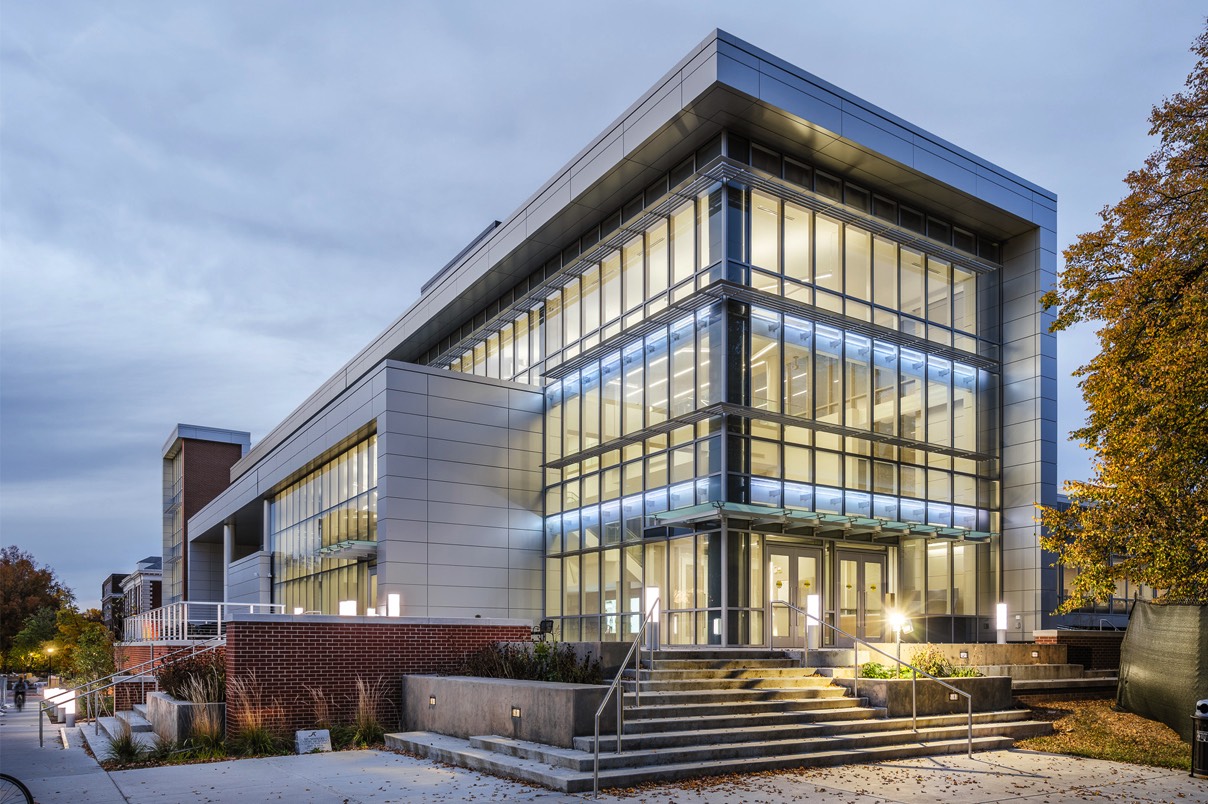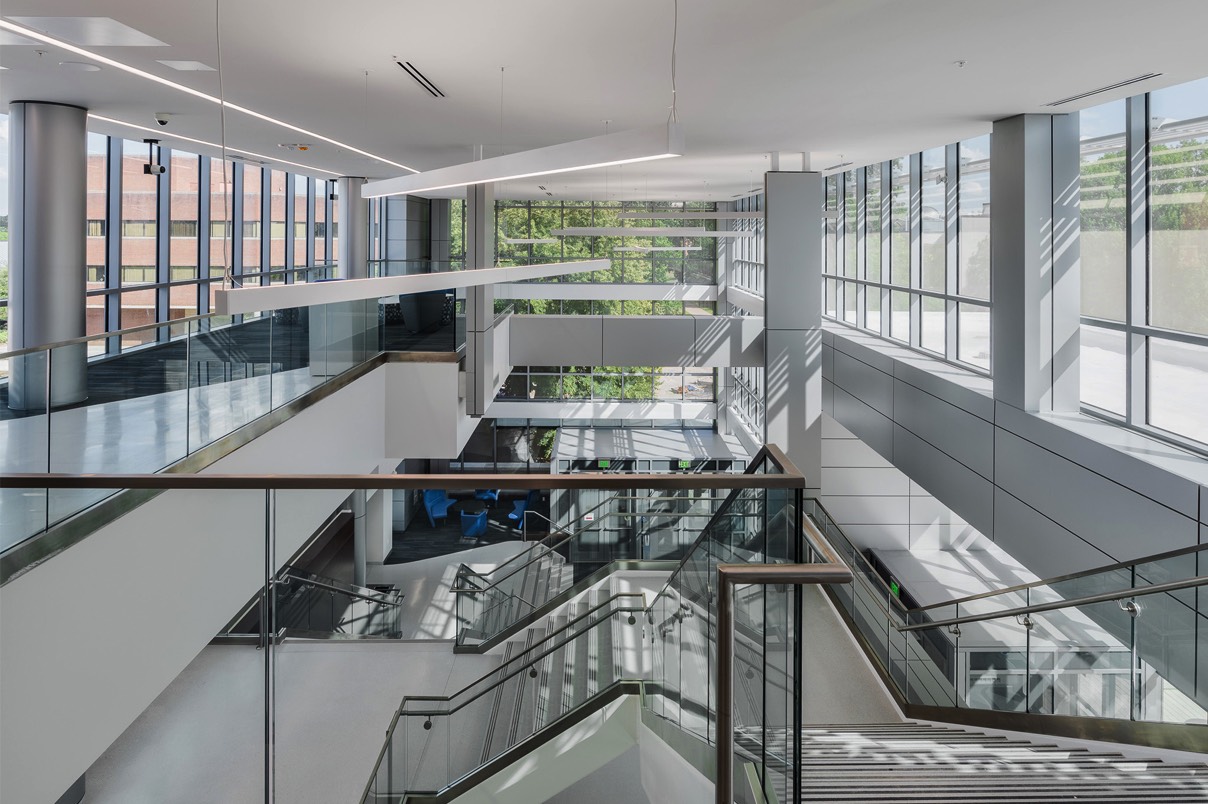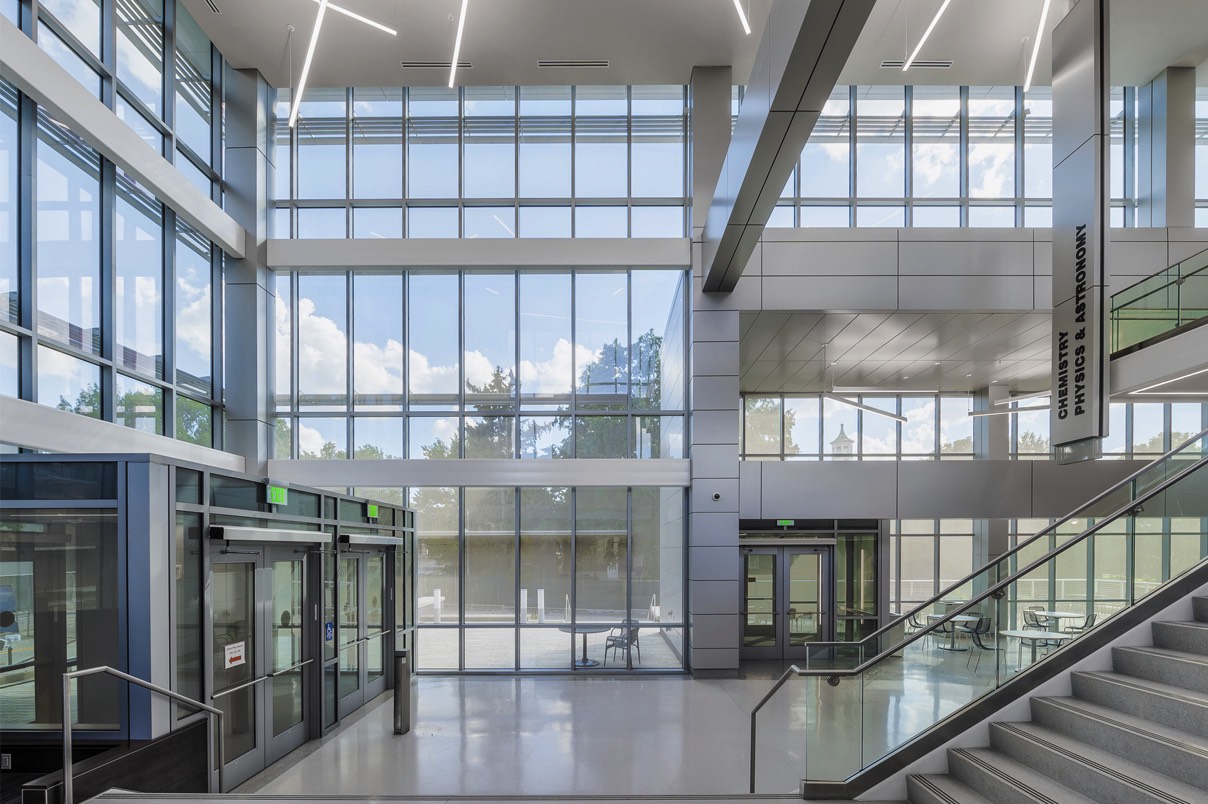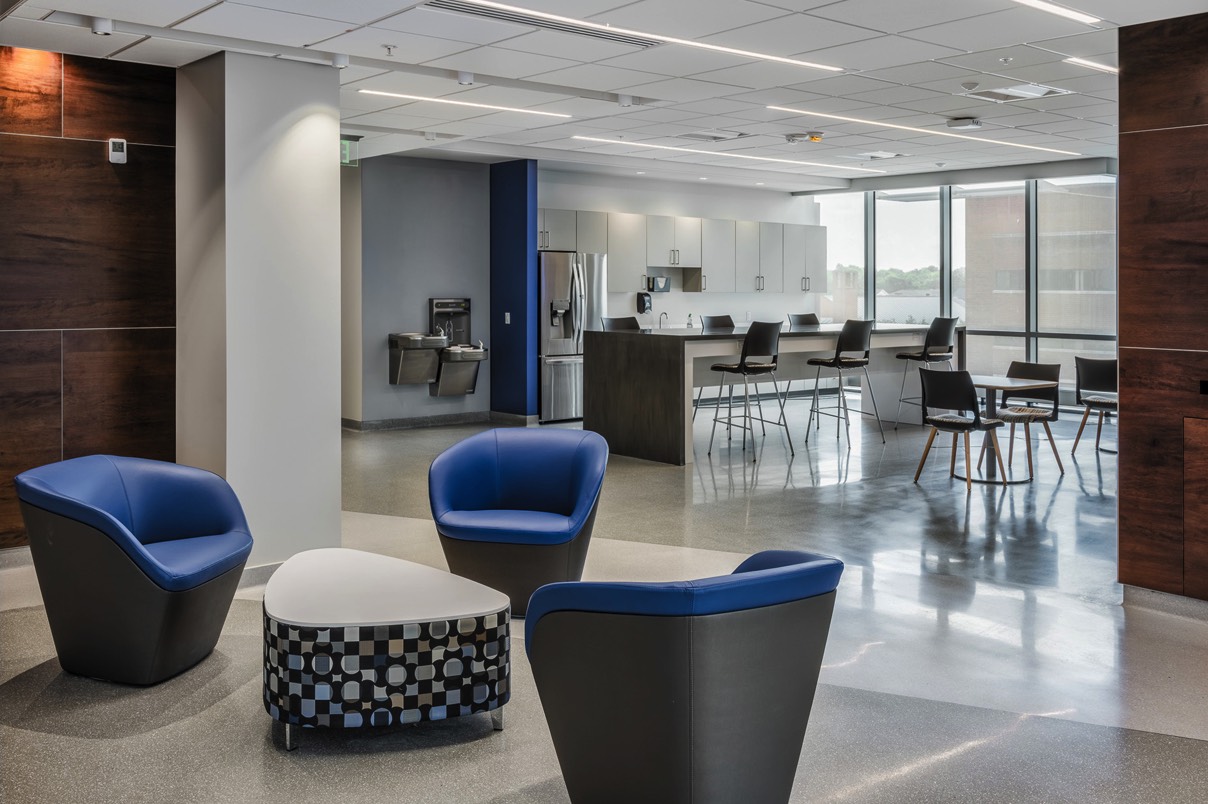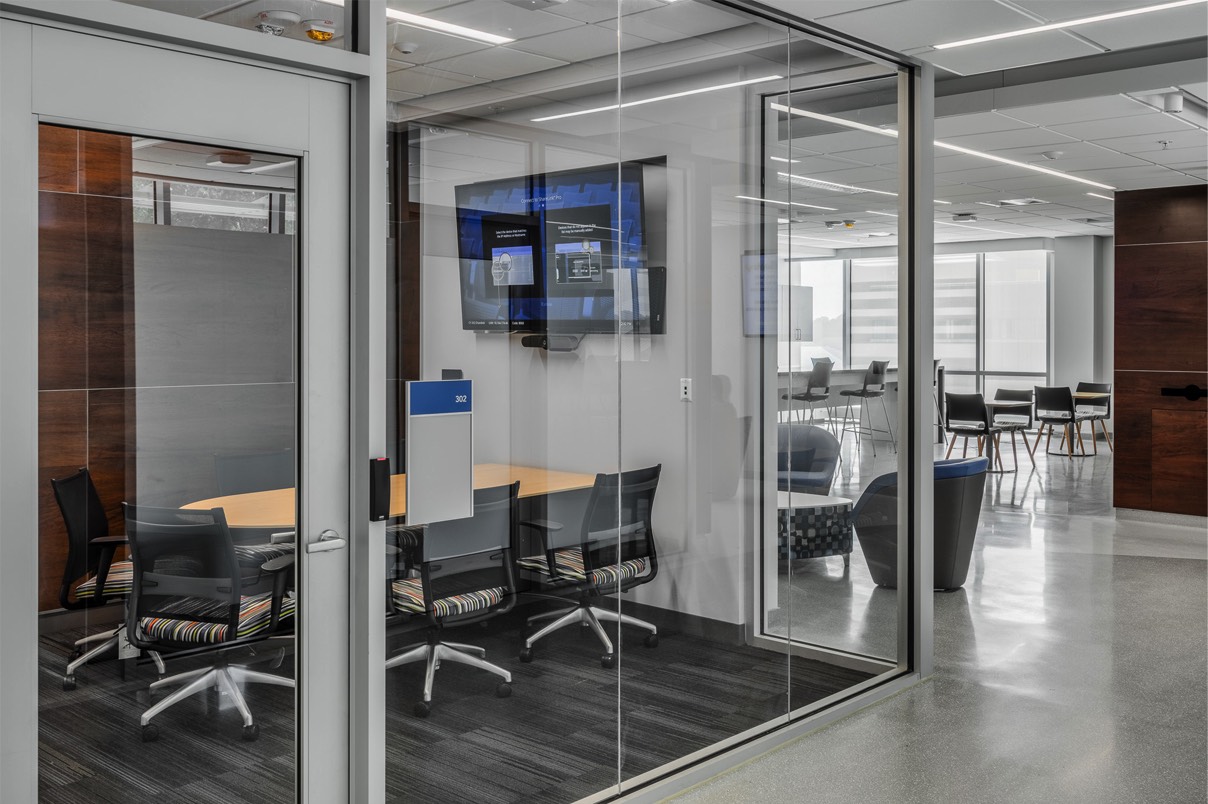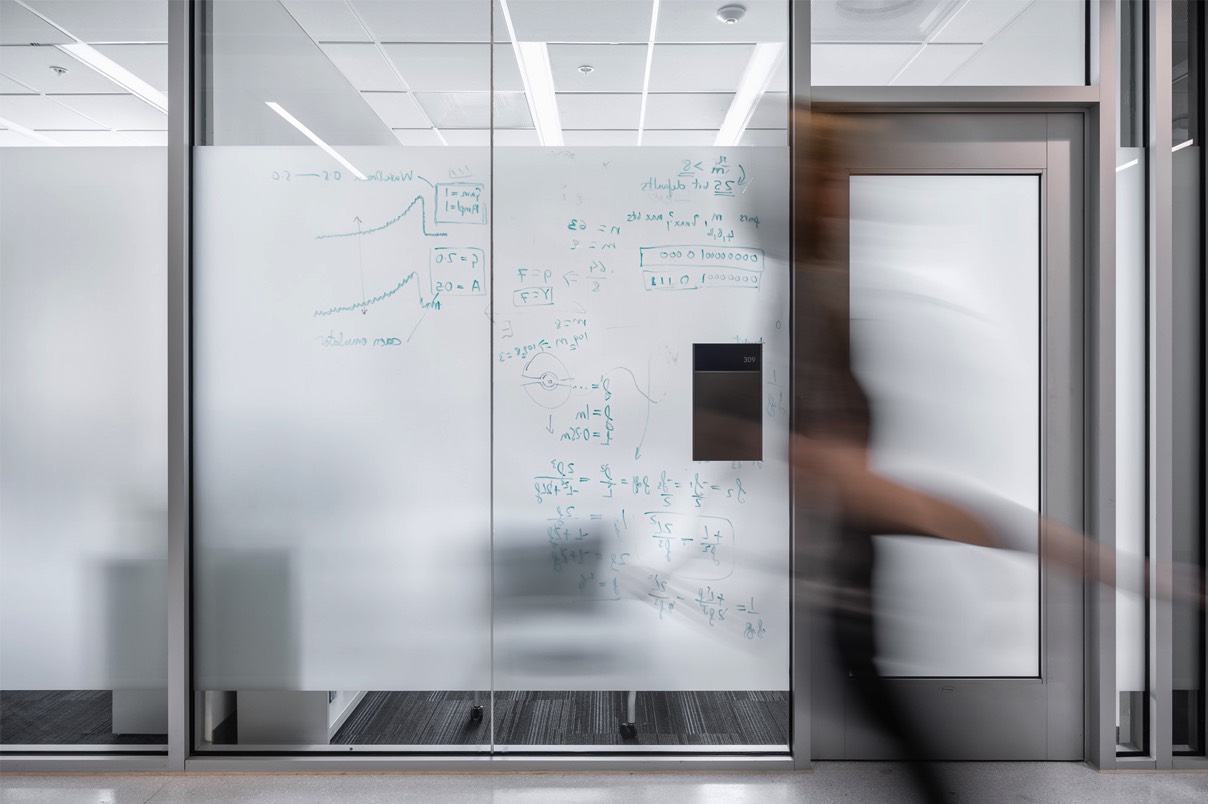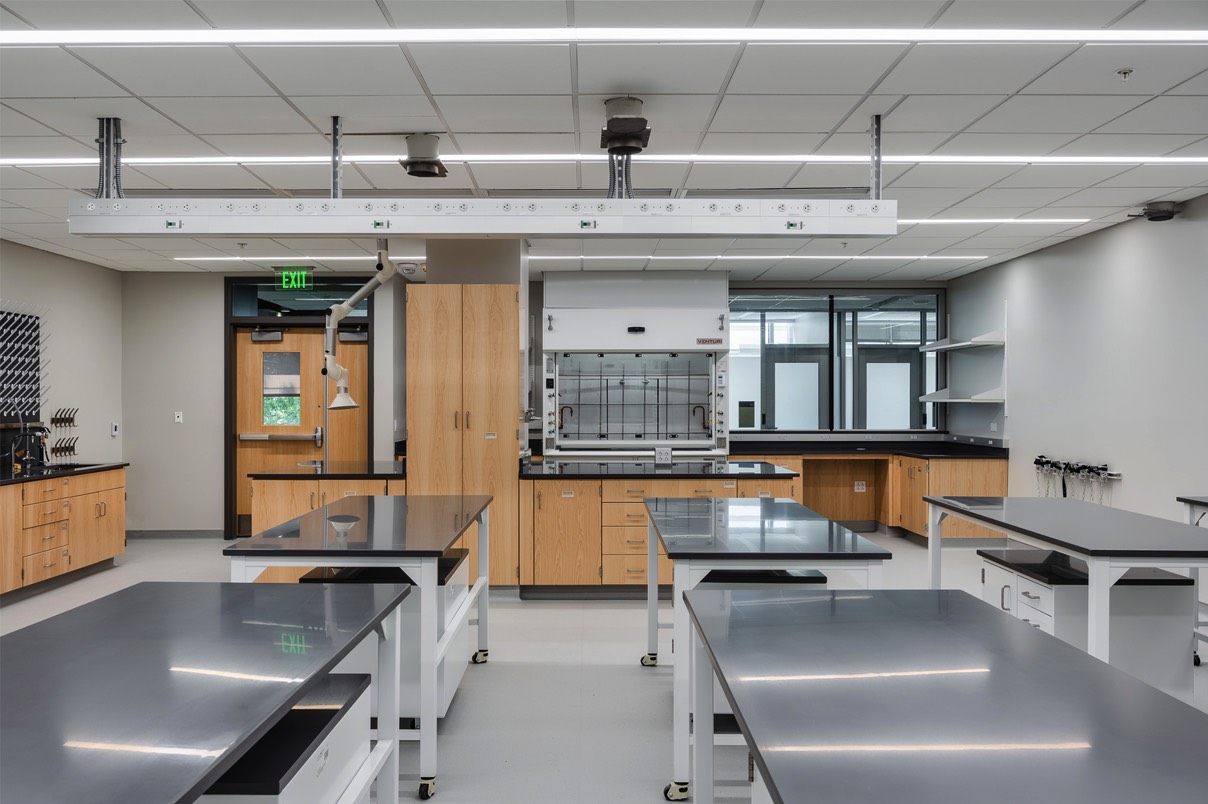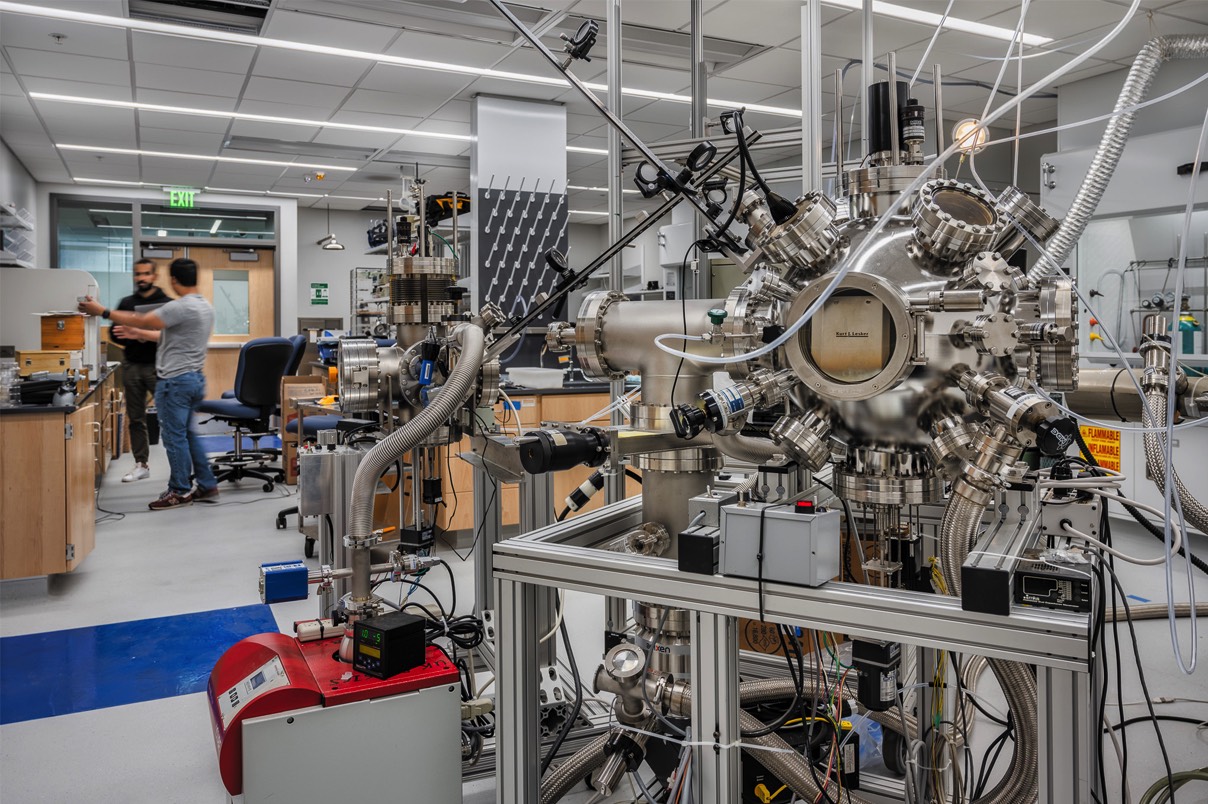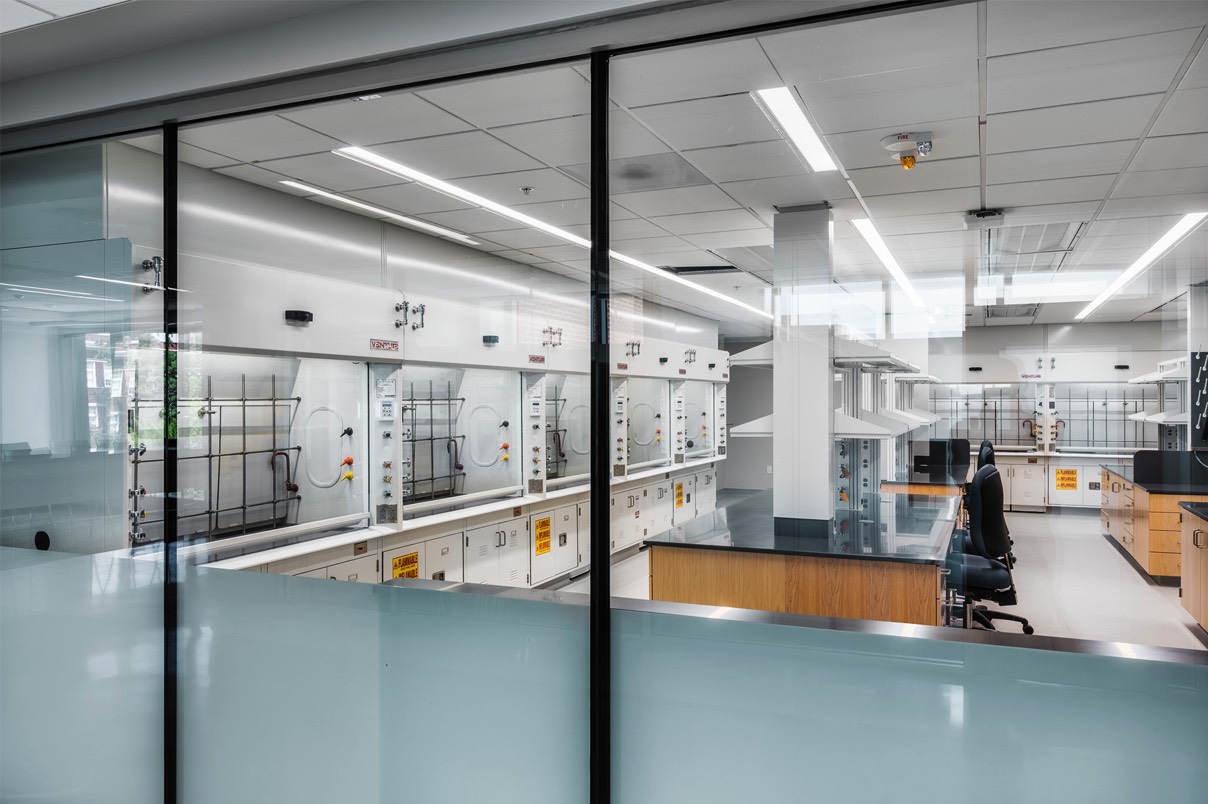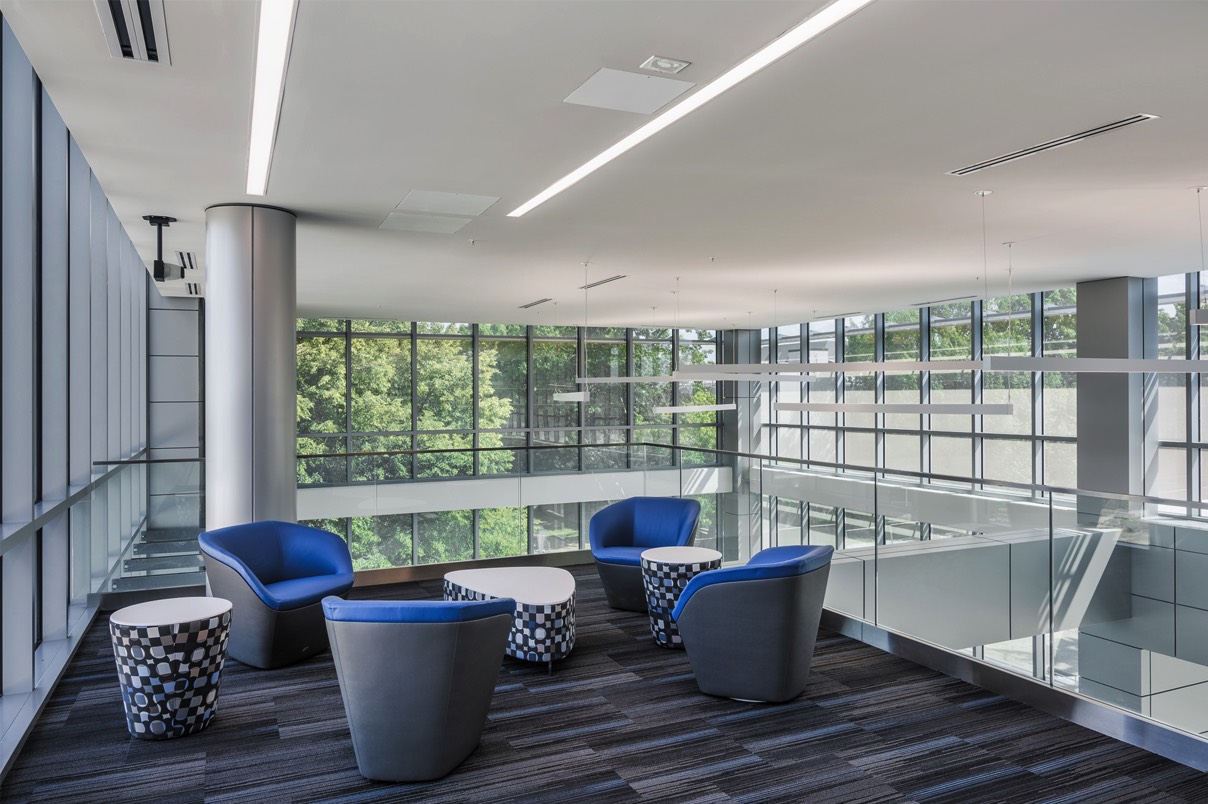Lexington, Kentucky
Every activity that occurs within the Chemistry-Physics Building is critical to advancing UK’s position as a premier research institution, and the complex, demanding laboratory capabilities of the Chem-Phys Building don’t exist elsewhere on campus. As a result, the fundamental renovation of the entire building had to be phased one floor at a time so that the rest of the building could remain operational. The current project is the first phase of what will be a multi-phase, multi-year reconstruction of the building.
Omni Architects’ scope included a detailed facility analysis, production of a new digital Building Information Model for the entire structure, program development for all four floors, and the creation of a masterplan for all phases of renovation. In addition, the design work for the first phase will establish the standard for all future phases of the renovation.
The masterplan reorganizes the building by function and department, with all of the teaching and public areas on the first floor, the second and third floors dedicated to advanced research laboratories for both Chemistry and Physics & Astronomy, and special-purpose research laboratories and building support functions are assigned to the ground floor.
During the first phase, the third floor will be completely gutted and then fit-out with new offices, Chemistry research laboratories, and associated support spaces. The design focuses on future flexibility, all-new engineering systems, and maximum transparency throughout the interior. The design and configuration of the offices and workstations has been adapted to accommodate today’s multi-generational work force through a variety of collaboration zones, unassigned work areas, and huddle rooms. Two work cafes turn the traditional break rooms into vibrant work zones that support interaction and collaborative, multi-disciplinary research.
The first phase also includes a complete redesign of the building’s exterior, including a replacement of the entire curtainwall enclosure, construction of new entrances, stairs and elevators, and other building support functions. When the renovations are complete, the University will have a completely new building that has been designed to meet the demanding research needs of its users for generations to come.

